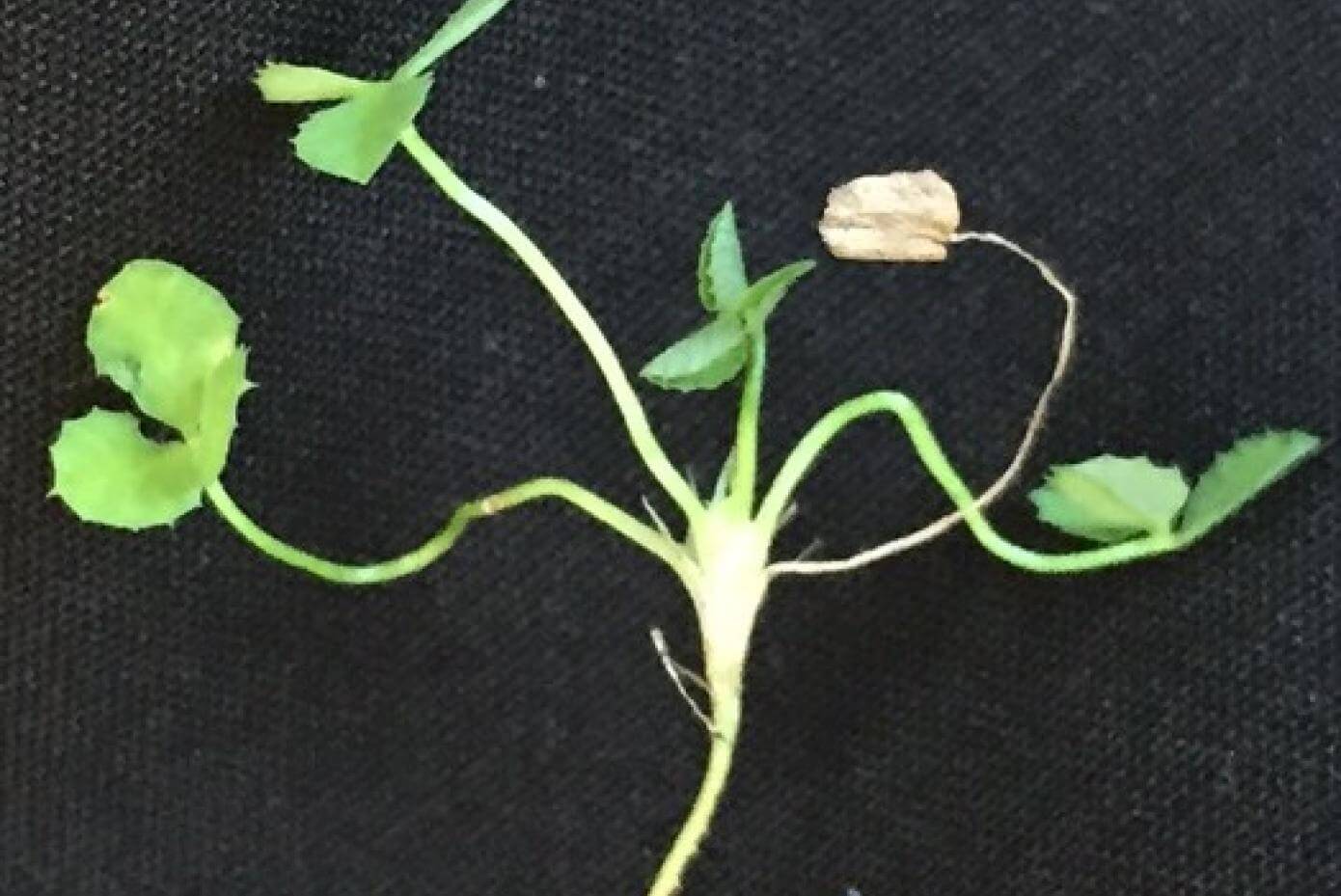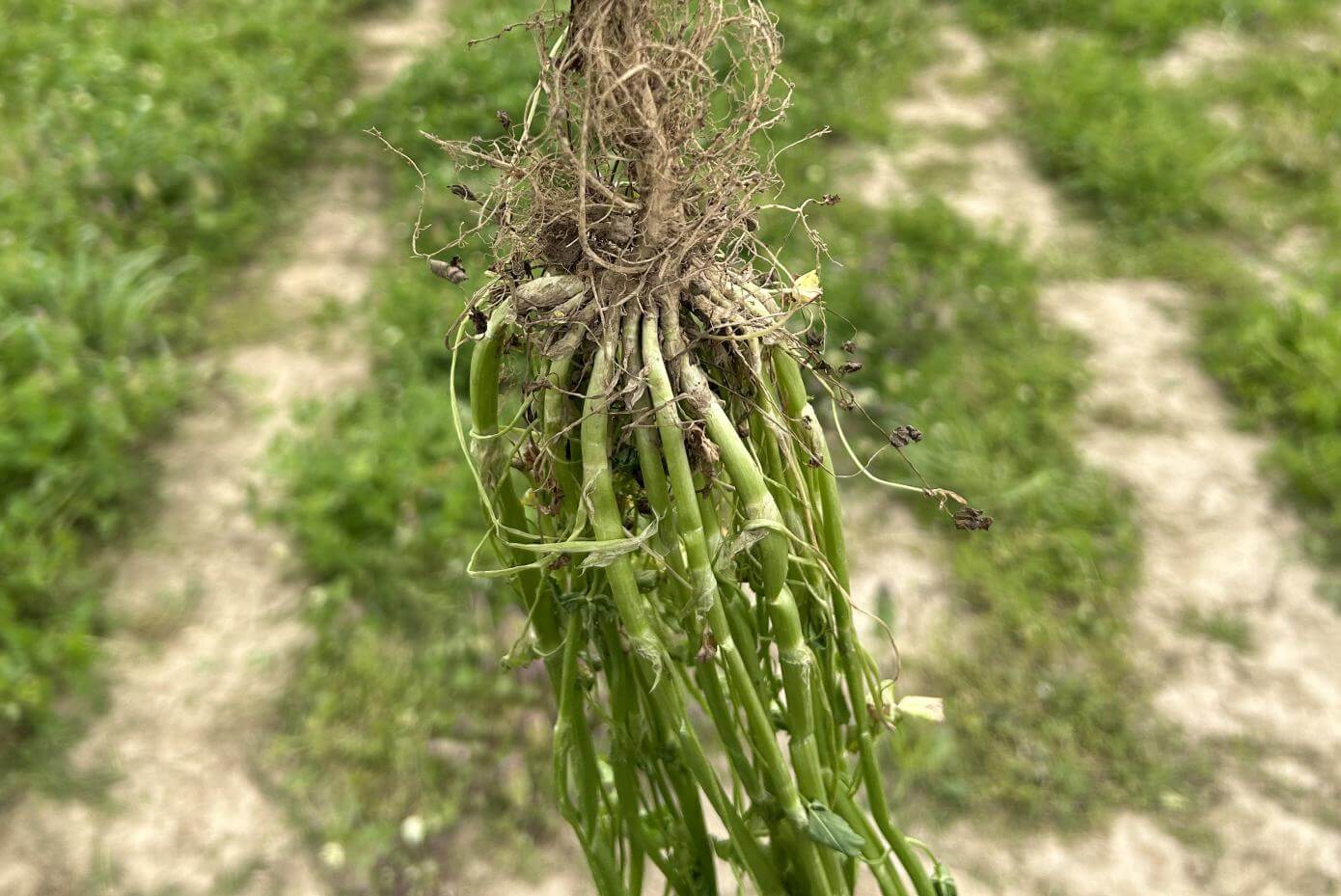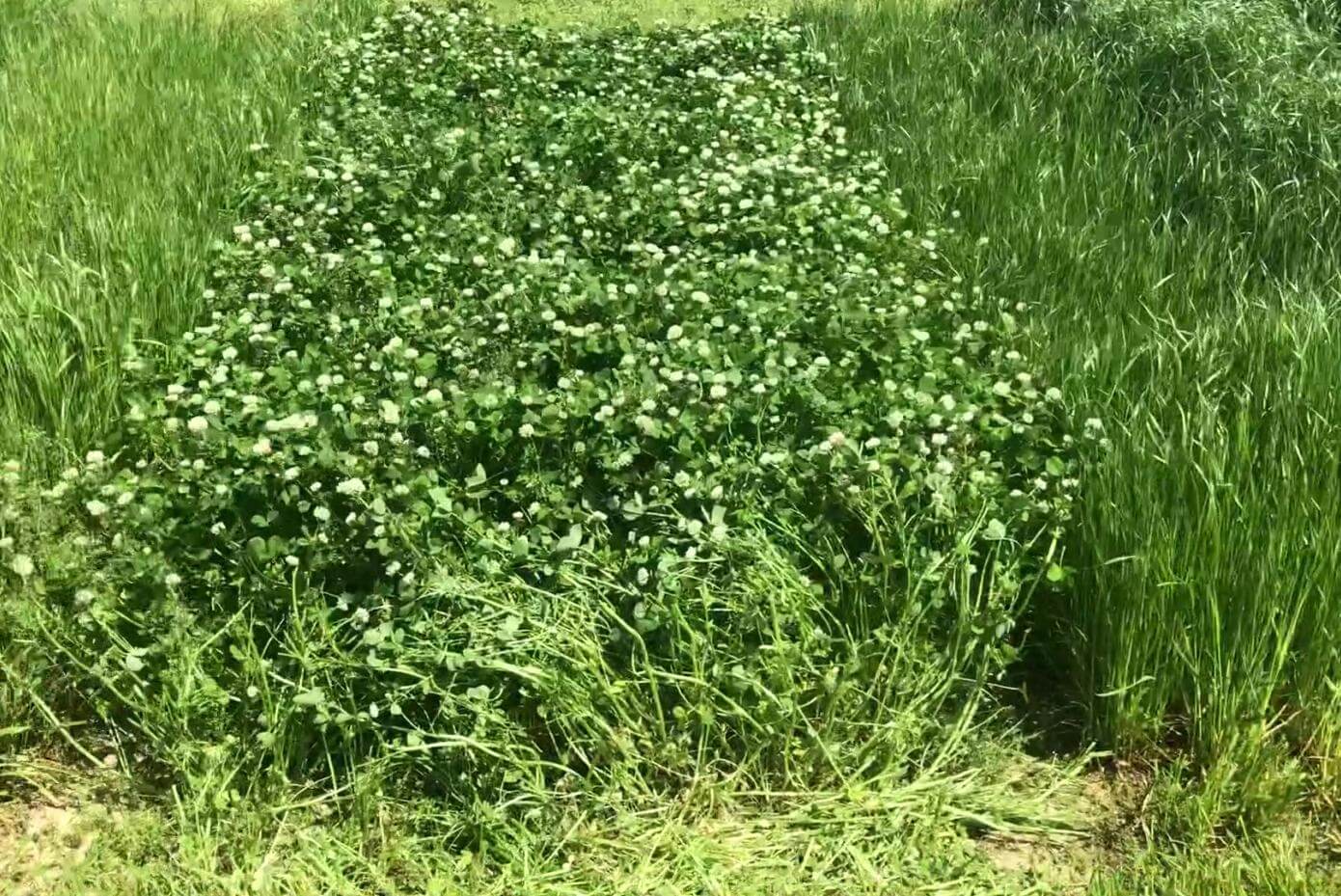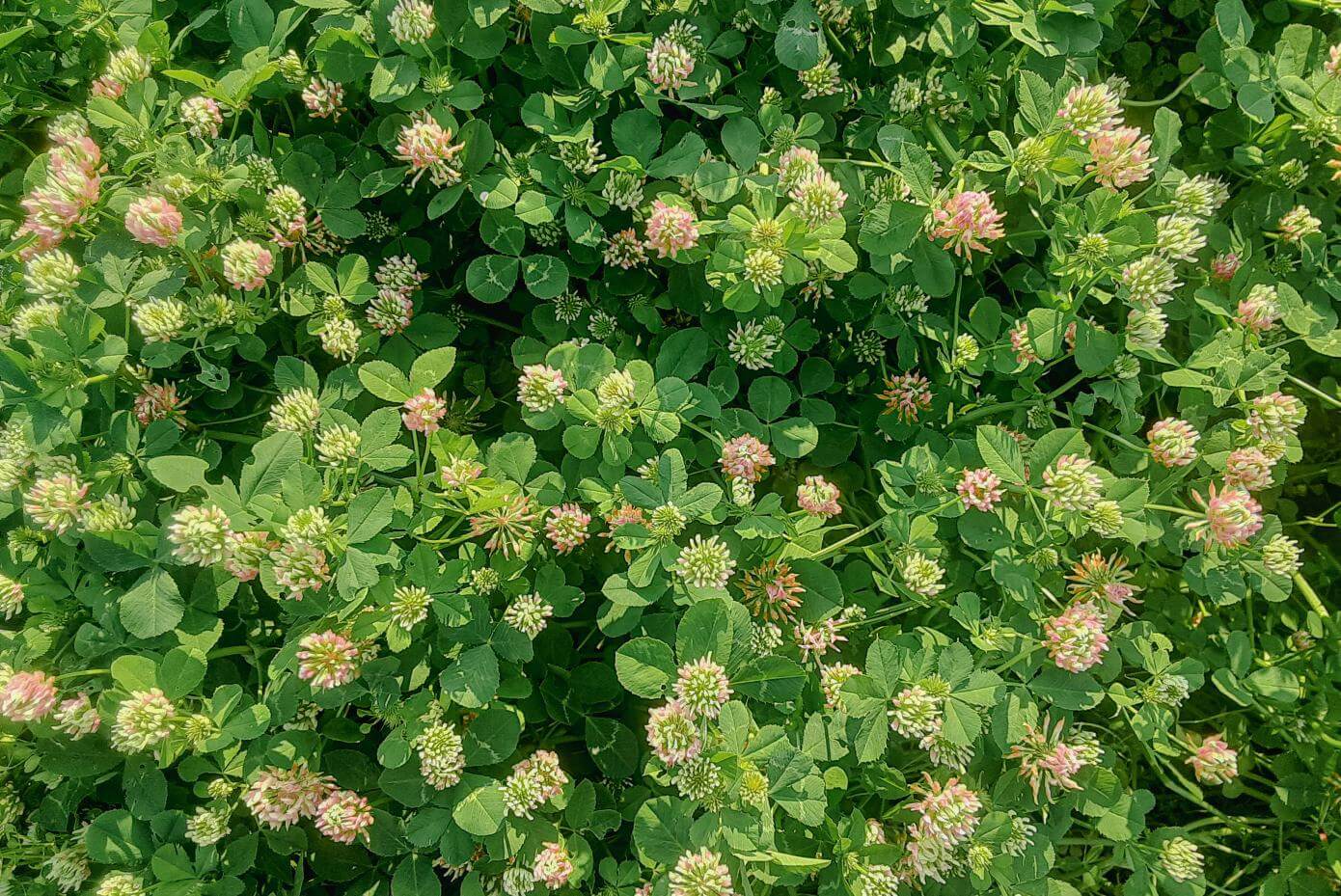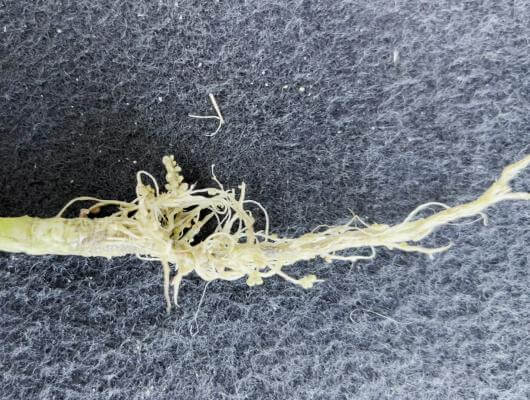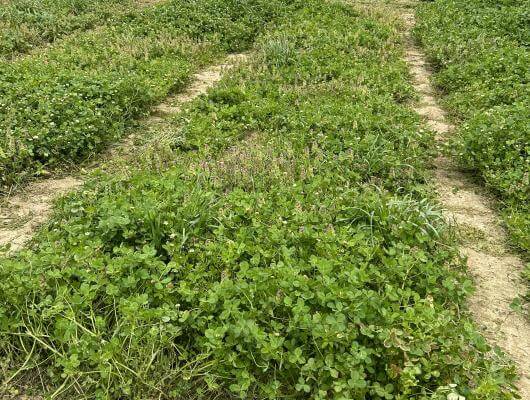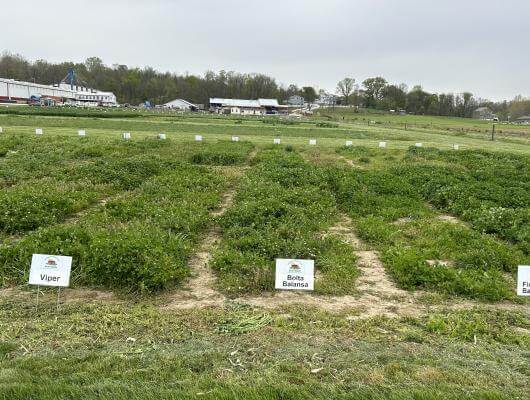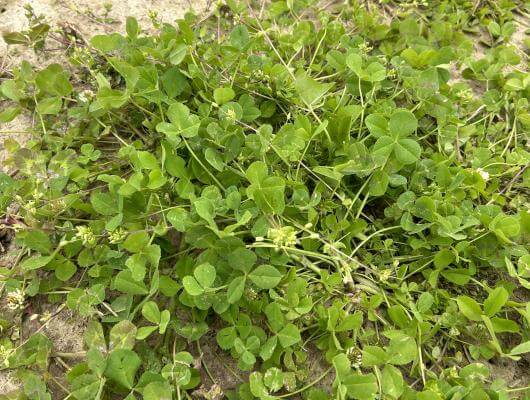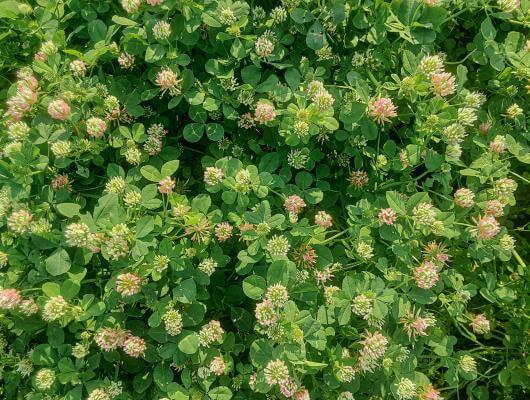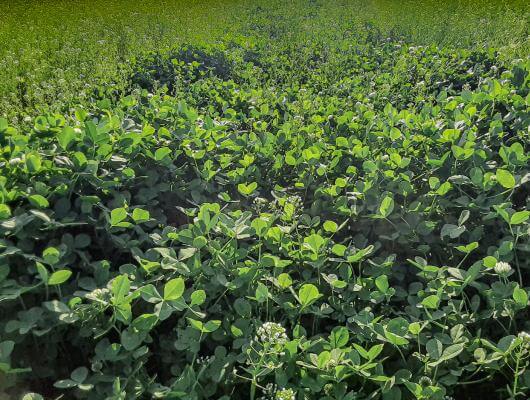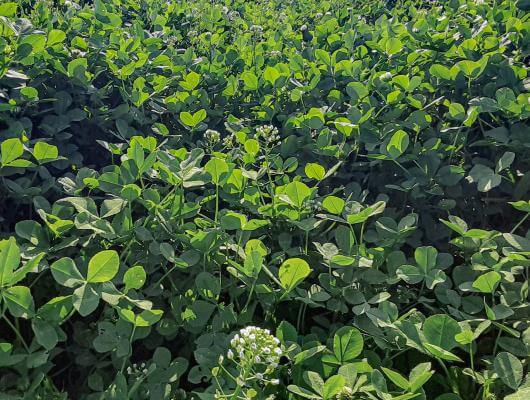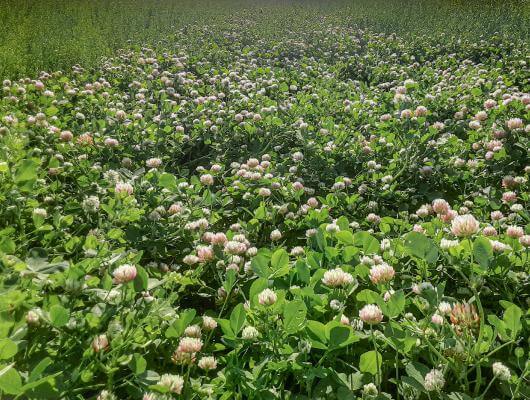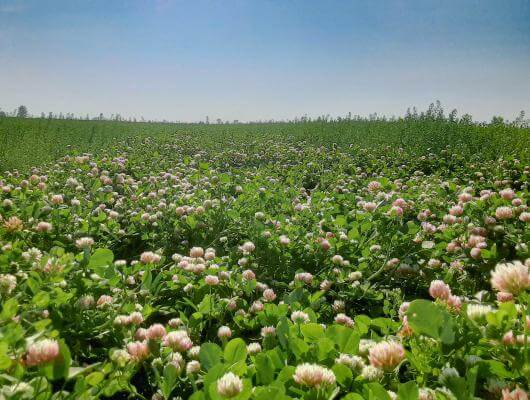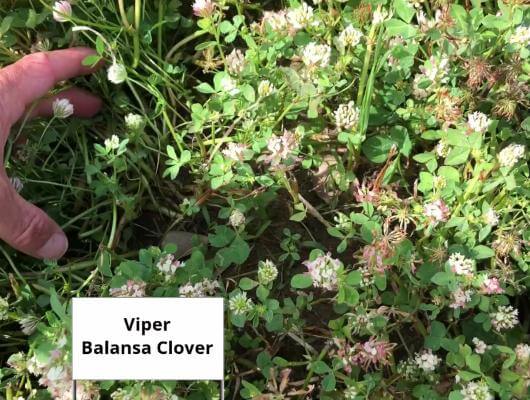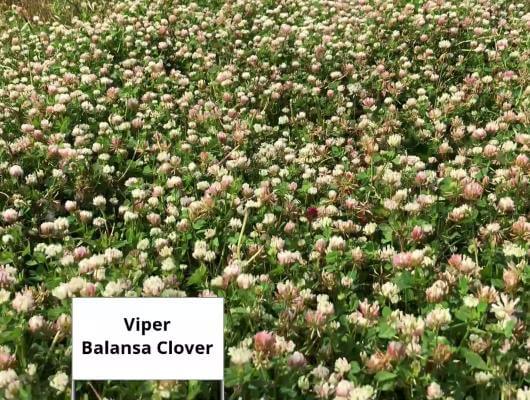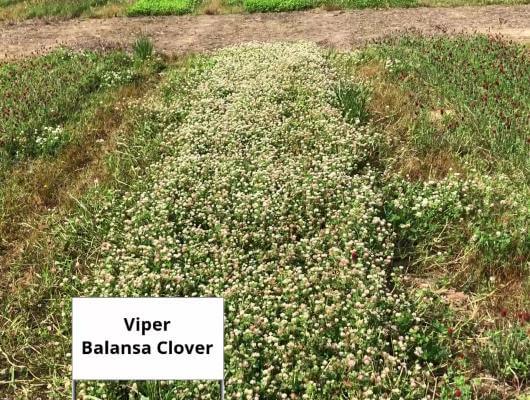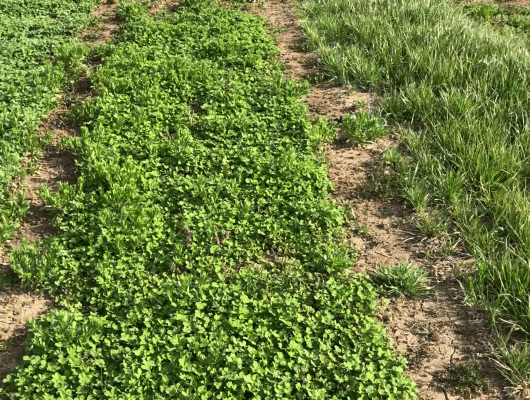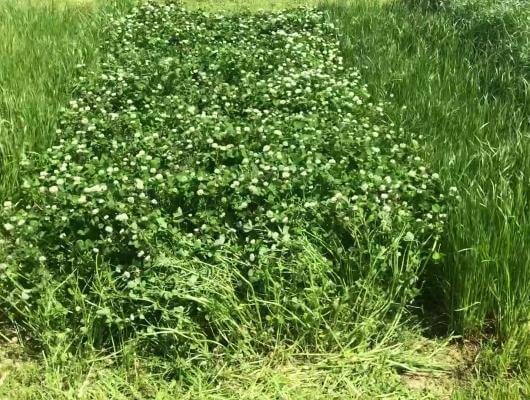Viper Balansa Clover
Quick to establish and early to bloom, Viper provides early nutrients and feed for both soil and animal health. Great for pollinators too!
Variety Summary
Viper balansa clover is an early maturing, high-yielding annual legume able to tolerate a wide range of soils. It produces significant amounts of nitrogen, ideal for cover crops and animal feed. Viper may be cut for stored forage or grazed. It is highly digestible, and adapted to rotational grazing. Viper can also take close grazing, even when young. Abundant flowers attract pollinators while hard seed production provides natural reseeding. Early trial results indicate Viper also has moderately good winter hardiness.*
*Viper has been tested in the United States since 2017. While we have much to learn about it, so far, Viper has shown moderately good winter survivability in PA, OH, & IN, along with early growth and vigor.
Grows Like No Other
Viper is quick to germinate, with better vigor/earlier growth than some other balansa varieties. Initially, Viper forms a small, multi-branched rosette emerging from a single, deep taproot. Under a grazing regime, Viper will remain prostrate. However, allowed to grow, Viper’s stems will eventually turn upright, forming a multi-branched hollow stem with copious amounts of plant mass up to three feet high.
As the plant matures, it will continue to grow and produce blossoms that are very attractive to pollinators. Allowed to seed, Viper is capable of producing large amounts of regenerative hard seed viable up to three years.
Tremendous Tolerance
Viper balansa performs well in an extremely wide range of soils, tolerating pH levels from 4.5-8.3 and able to survive in waterlogged soils and short periods of flooding.
A Multipurpose Clover
Cover Crop
Viper’s nitrogen production, soil-building root structure, and extensive biomass production make it a top choice for adding to a cover crop mix. Viper can be combined with grasses, brassicas and other legumes. Balansas have been shown to fix over 100 lbs. N/acre per year. Viper, in particular provides that N earlier, due to its earlier maturity.
Forage
Viper can be frost seed or broadcast into existing pastures to boost protein levels of forage, while contributing nitrogen to other crops. With excellent digestibility and protein levels in the upper 20’s, Viper is an ideal component in a small grain/grass/legume sward that can be harvested by grazing, hay or silage. Viper can take close grazing, even when young. Use with other non-legumes will reduce bloat potential.
Pollinator/Wildlife
Viper produces abundant flowers. Honeybees and other pollinators love it and so do the deer!
Yield Data
Mississippi State University
Cover Crop Trial
Starkville, MS
|2019-2020
| Variety | Yield (DM/AC) | Total Yield | |
|---|---|---|---|
| 3/15/2020 | 5/1/2020 | ||
| Viper | 1824* | 2481* | 4305* |
| Taipan | 1714* | 1628 | 3342* |
| Fixation | 1666* | 2578* | 4243* |
| Lsd | 1153 | 877 | 1862 |
Cover Crop Performance
In the October of 2019, researchers with the University of Tennessee planted extensive cover crop trials in three Tennessee locations – Knoxville, Spring Hill, and Milan. In addition to assessments of nitrogen content and release, assessment were conducted for ground cover, biomass and height. The data below reflects averages of all three sites. Site-specific data and complete results available upon request.
University of Tennessee
Biomass, Canopy Cover, and Height
Three Location Average
|2019-2020
| Variety | Biomass (Tons DM/A) | Canopy Cover (%) | Height (in) | |||||
|---|---|---|---|---|---|---|---|---|
| Apr | May | Nov | Feb | Nov | Feb | Apr | May | |
| Viper | 0.4 | 1.8 | 2 | 16 | 0 | 1 | 6 | 15 |
| FIXatioN | 0.3 | 1.2 | 3 | 12 | 0 | 1 | 5 | 20 |
| Paradana | 0.2 | 0.7 | 2 | 9 | 1 | 1 | 4 | 10 |
University of Tennessee
Nitrogen Content/Estimated Nitrogen Release
Three Location Average
|2019-2020
| Variety | Biomass (Tons DM/A) | Total Nitrogen (%) | Est. N Released: April Termination (lbs/ac) | Est. N Released: May Termination (lbs/ac) | ||||||
|---|---|---|---|---|---|---|---|---|---|---|
| April | May | April | May | 2 wks. | 4 wks. | 12 wks | 2 wks. | 4 wks. | 12 wks | |
| Viper | 0.4 | 1.8 | 3.1 | 2.4 | 1.0 | 2.0 | 13.7 | 2.7 | 5.7 | 45.0 |
| FIXatioN | 0.3 | 1.2 | 3.3 | 2.6 | 0.7 | 2.0 | 12.0 | 2.0 | 5.0 | 36.7 |
| Paradana | 0.2 | 0.7 | 2.6 | 2.1 | 0.0 | 0.7 | 4.7 | 1.0 | 2.0 | 15.3 |
Trial Data
Winter Hardiness
Early trial results indicate Viper also has moderately good winter hardiness. Viper has been tested in the United States since 2017. While we have much to learn about it, so far, Viper has shown moderately good winter survivability in PA, OH, & IN, along with early growth and vigor.
Early Flowering
In both the South and the North, we have seen Viper demonstrate abundant growth, early flowering and extensive pollinator activity.
More To Come
As part of our continued research efforts, Viper was recently planted at numerous locations, with new data anticipated soon.
Planting Instructions
Before You Plant
Viper balansa can grow over an extremely wide range of soils tolerating pH levels from 4.5-8.3. It is quite tolerant of waterlogged soils and can even withstand short periods of flooding. For best performance, saline and drought soils should be avoided. Seeding into deep, sandy soils or soils prone to drought is not recommended.
For optimal performance, conduct a soil test and follow the recommended lime and fertilizer recommendations. In established pastures, remove excess forage through grazing or late season haying. This will help ensure successful seedling emergence and establishment. Reduce weed population prior to planting. Be aware of herbicide carryover/residual of chemicals applications prior to planting.
Planting Method
Plant into a prepared/firm seedbed by broadcast or drill. Planting too deep may lead to poor establishment or stand failure. Cultipacking or dragging before and after seeding helps create a firm seedbed.
Inoculation
Viper needs to be inoculated with Rhizobium leguminosarum biovar trifolii. This is best achieved with Nitro-Coat®.
Seeding Rate
Planting Dates
Planting Map
Planting Depth
1/8"-1/4"
Optimal pH
4.5-8.3
Fertilizer
Apply lime, potassium and phosphorus per soil test results. No nitrogen is necessary.
